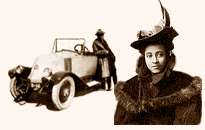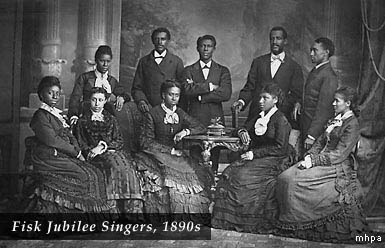|



Victoria's
Past honors and remembers Rosa Parks.


The Black Victorians
THE HISTORY OF BLACK PEOPLE IN BRITAIN certainly
goes back a long way - well before the reign of Queen
Victoria. There were Black people in Britain in Roman times,
and there has been a continuous Black presence here since
1555. For Shakespeare's London audiences, Black faces would
have been a familiar sight.
The eighteenth century saw a great expansion in
Britain's Black population. After the War of the Spanish
Succession in 1713, British slavers dominated the infamous
Atlantic slave trade. Some slaves were landed and sold at
London, Liverpool or Bristol, but many Black people were
brought as domestic servants by returning sea-captains,
colonial administrators and plantation owners. For the
English aristocracy and the newly rich, a Black page or
handmaiden was an asset to be shown off as evidence of
exotic wealth, so in the 18th century Black people were
ironically more evident in the art and writing of the time
than they were to be in the early Victorian period.
By the 1760s, the Black population had grown to somewhere
between 20,000 and 40,000; Granville Sharp estimated the
number of black servants in London alone at 20,000, in a
city of 676,250 people. Many had attained freedom - or run
away from their masters. In 1772, Lord Chief Justice
Mansfield's historic decision in the case of runaway John
Somerset ruled that a slave could not be deported from
Britain against his or her will. This was the beginning of
the end of slavery in Britain itself, and an encouragement
to Black people and to abolitionist campaigners. The
abolition of slavery was confirmed in 1806 by an Act of
Parliament.
As the 18th century drew to a close, Britain's
Black population was well established, breaking free from
slavery - but usually very poor, sometimes destitute. The
first-generation immigrants were overwhelmingly male,
supplemented by arrivals of Black sailors, plus 4,000 Black
refugees who had fought for George III against the
American Revolution. Black people integrated and
intermarried into poor white urban populations, and entered
the nineteenth century sharing in the misery and historical
anonymity of the British poor.



from the McKenzie
Heritage Archive |